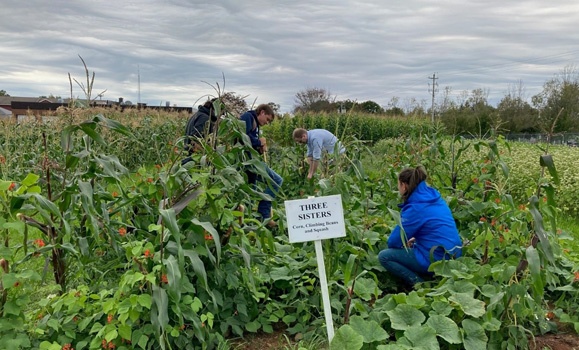News
» Go to news mainThe Three Sisters

Students in the Introductory Soil Science course (Soil 2000) practice soil sampling techniques in the Three Sisters demonstration plot at the Plant Food and Environmental Sciences Demonstration Garden.
The Three Sisters planting is found historically among many different Indigenous North American communities and consists of an interplanting of corn, beans, and squash – the Three Sisters.
The three plantsÌýbenefit one another as they grow. Corn is planted first, when about 10cm tall, the beans are planted around the corn which will provide support to them as they grow. ÌýBeans, like otherÌýlegumes, have bacteria living on their roots that help them absorb nitrogen from the air and convert it to a form that plants can use. Corn, which requires a lot of nitrogen to grow, benefits most. Squash is planted last, and the large leaves shade the soil and prevent the growth of weeds. Ìý
The three sisters are also an important trio nutritionally. ÌýCorn supplies carbohydrates, beans have protein, and squash contributes vitamin A.
Ìý
Recent News
- Do you have any classes, trips, or research happening this summer?
- Microsoft Intune enrollment initiative
- Canadian Society for Agricultural and Biosystems Engineering
- Balancing Boots and Books: Dr. Jolene Vermeulen’s life as a vet, farmer, and educator
- Chartwells Update
- Join the Residence Life team – Residence Life Don
- Rolling With Pride: Dalhousie Faculty of Agriculture celebrates love, community, and color in the Truro Pride parade
- Romblon State University Summer Enrichment camp 2025 comes to a close
